Lifestyle
TMZ TV Hot Takes: Britney & Jamie Lynn Spears, George Santos, Travis Kelce

It’s the middle of the week, and TMZ’s got a whole bunch of clips to get you over the hump (day).
TMZ Live
TMZ Live
TMZ.com
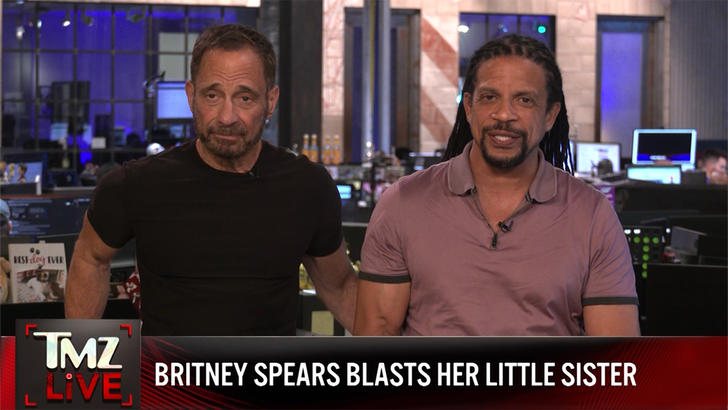
On “TMZ Live” … Harvey and Charles analyze Britney Spears calling her sister Jamie Lynn a “bitch” in a rambling, somewhat incoherent video.
TMZ on TV
TMZ on TV
TMZ.com
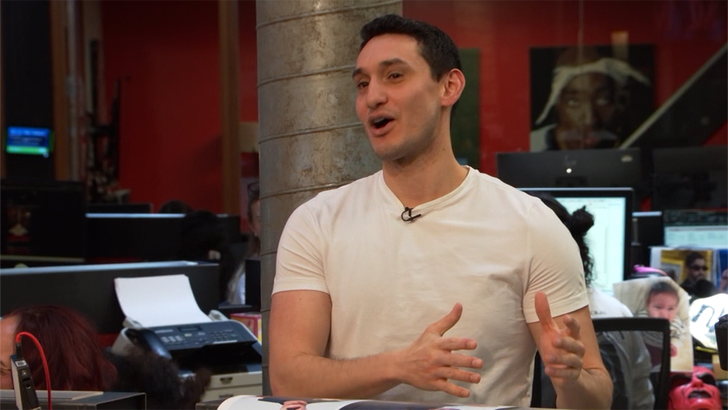
Our “TMZ on TV” crew talks George Santos jumping back to his drag queen persona for a Cameo.
TMZ Sports
TMZ Sports
TMZSports.com
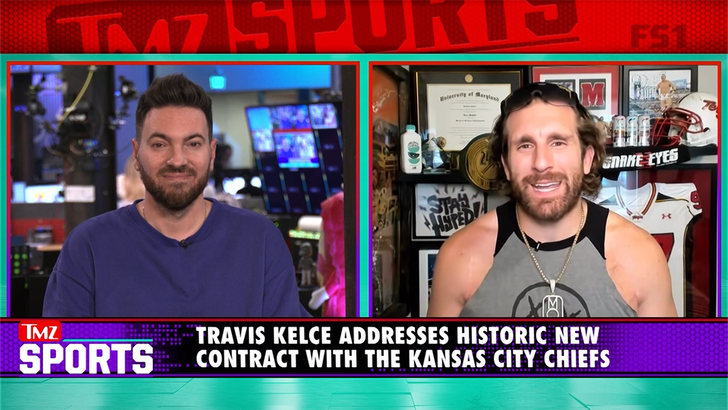
And, our “TMZ Sports” crew talks Travis Kelce‘s comments on his historic contract with the Kansas City Chiefs.
Check your local listings for when TMZ is on in your area or catch up on past episodes!

Lifestyle
From college exposés to family secrets, check out these new podcasts

NPR; KUT; NEPM; KCUR; KUOW

NPR; KUT; NEPM; KCUR; KUOW
There’s a lot to celebrate in May — Cinco de Mayo, graduation, Mother’s Day, Memorial Day. Add finding your new favorite podcast to the list with the NPR One team’s recommendations from across public media.
The podcast episode descriptions below are from podcast webpages and have been edited for brevity and clarity.
Wild Card – NPR


Part-interview, part-existential game show – this is Wild Card from NPR. Host Rachel Martin rips up the typical interview script and invites guests to play a game about life’s biggest questions. Rachel takes actors, artists and thinkers on a choose-your-own-adventure conversation that lets them open up about their fears, their joys and how they’ve built meaning from experience – all with the help of a very special deck of cards.
Start listening to, “Why Jenny Slate sometimes feels like a ‘terminal optimist’.”
Ten Thousand Things with Shin Yu Pai – KUOW


This season features the stories of trailblazing Asian American women and the resilience of Asian American communities, even in the face of endangerment. Three of this season’s stories take place in Seattle’s Chinatown-International District Neighborhood, with help from the Wing Luke Museum. Featured guests include poet and former MMA cage fighter Jenny Liou; Seattle chef Tiffany Ran; and flutist Leanna Keith; among others. New episodes drop on Tuesdays. Ten Thousand Things: In many Chinese sayings, “ten thousand” is used in a poetic sense to convey something infinite, vast, and unfathomable. For Shin Yu Pai – award-winning poet and museologist – the story of Asians in America is just that. Ten Thousand Things is a podcast about modern-day artifacts of Asian American life and the stories they reveal, created and hosted by Shin Yu Pai and produced by KUOW (Seattle’s NPR station). Ten Thousand Things is a vibrant, diverse, and bittersweet celebration of Asian America … and a challenge for us all to reimagine stories of the past and future.
Listen to “Teardrop Lip.”
StoryCorps – NPR


In this season of the StoryCorps Podcast, we delve into what happens when individuals interview their parents, partners, or children — the ones who matter the most to them. Unlike a journalist, it’s someone they deeply cherish asking the questions. These stories are about people who have forged their own paths, done things their own way. Join us as we explore this archive, unveiling an unprecedented and candid portrayal of contemporary American life.
Listen to episode 1, “My Way.”
NPR Explains… – NPR

We’ve heard rhetoric about a “crisis at the border” and a “surge of migrants pouring into the U.S.” What’s happening at the border and what makes immigration such a key issue? NPR Explains is back to help break down U.S. immigration policy, conditions at the U.S.-Mexico border and how the system affects Americans. Join host and immigration correspondent Jasmine Garsd in NPR Explains: Immigration, a podcast series exclusively on the NPR app, which is available on the App Store or Google Play.
Start listening to part one, “Why is immigration a key issue?”
College Uncovered – GBH


In a world focused on getting in, do you know what you’re getting into? College Uncovered, from GBH News in collaboration with The Hechinger Report, pulls back the ivy on American higher education, exposing the problems, pitfalls and risks — and helping you navigate them. If you wonder how college really works, subscribe now. Because it’s a real education.
Start listening to episode 1, “Buyer Beware.”
The Secrets We Keep – NEPM


The stories we don’t tell, what they say about our world, and what they do to our minds — a new podcast from NEPM. Over five episodes, this limited series uses the lens of secrets to explore societal taboos and stigmas around sexual orientation, abortion, genetic origins, family scandals, and money — through the voices of secret-keepers, those kept in the dark, and history and social science experts (starting with the host’s family secret.)
Listen to part one, “Anatomy of a Secret.”
In Our Headphones – KEXP


Introducing KEXP’s newest music discovery podcast. In Our Headphones brings you five song recommendations every Monday, straight from KEXP’s DJs and Music Directors. We learn stories and insights about the artists, make connections between the music and the world around us, and get to know the diverse roster of DJs that make up the KEXP airwaves. Join hosts Janice Headley and Isabel Khalili on this never-ending journey of music discovery.
Listen to episode 1, “Cheryl Waters: Brimheim, English Teacher, Lair.”
Pause/Play – KUT


Up From Dust – KCUR


Trees are swallowing prairies. Bees are starving for food. Farmland is washing away in the rain. Humans broke the environment — but we can heal it, too. Up From Dust is a new podcast about the price of trying to shape the world around our needs, as seen from America’s breadbasket: Kansas. Hosts Celia Llopis-Jepsen and David Condos wander across prairies, farm fields and suburbia to find the folks who are finding less damaging, more sustainable ways to fix our generational mistakes.
Start listening to “When good plants turn bad.”
Untangled – WOSU


Body Electric – NPR


NPR’s Jessica Green and Jack Mitchell curated and produced this piece.
Lifestyle
L.A. Affairs: My ex gave me a diamond ring. Was he serious?
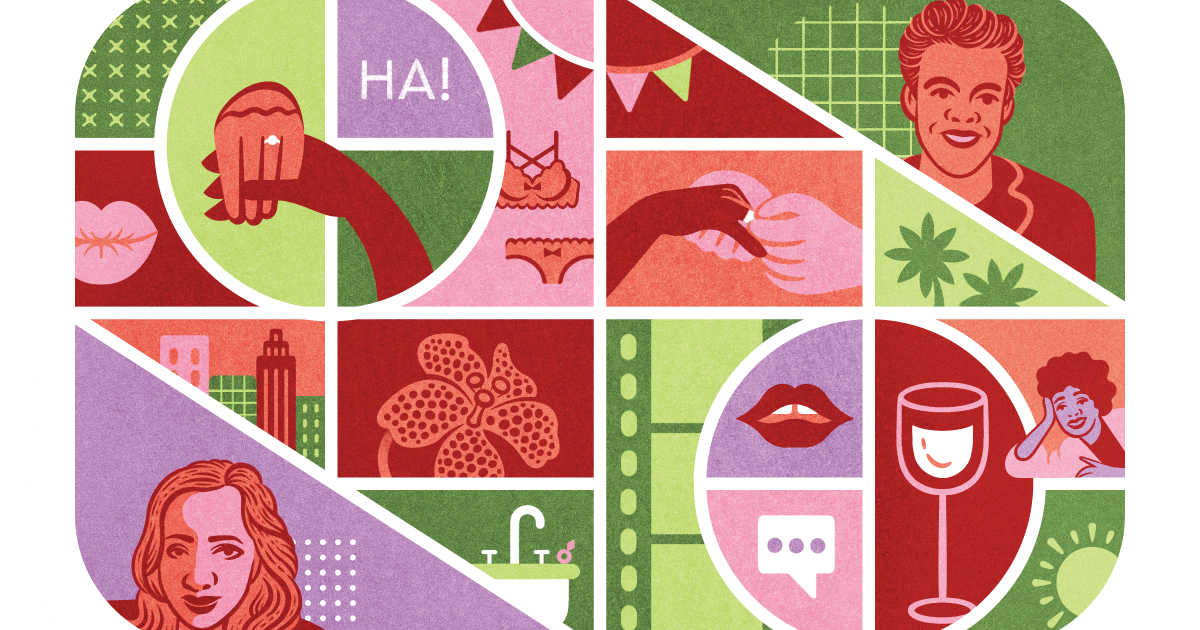
As we walked back to our cars after the party, my ex-boyfriend said, “I have something for you,” and dropped an object into the center of my palm.
I unfurled my fingers and was delighted to find a large diamanté cocktail ring. “What’s this?”
He grinned. “Isn’t this what you always wanted? For me to give you a big ring?”
I laughed. His sense of humor was like kryptonite. We hadn’t been together in five years, but once you’ve had it, funny is hard to forget.
“What’s the catch?” I knew there had to be one. I studied the tiny pavé diamonds covering the elaborate flower design. It was lovely, if not exactly my style. But I couldn’t get too lost in the moment. I knew he hadn’t purchased this trinket for me.
“Where did you get it?”
“I found it in the co-ed bathroom,” he said. “Sitting on the sink.”
Suddenly things made a lot more sense. “So do you mean we’ve just run off with someone’s ring?”
“Pretty much,” he said.
The party we’d just left was held after-hours at a high-end retail store on Rodeo Drive in Beverly Hills. A fashionista had inadvertently left it behind.
“Don’t you think we should return it?”
He shrugged. The store had closed. The ring was my problem now. Maybe he was right about the ring. I didn’t want to give it back — even if it wasn’t rightfully mine. It was thrilling.
I could have trekked back to the store and banged on the window, as a reasonable person would have done. Instead, I slipped it onto my finger and admired it. The thing is, I was raised to want a ring from a man. When I was a kid, my single mother played the song “Diamonds Are Forever” by Shirley Bassey, and we danced around the living room to it. It was basically our theme song.
Diamonds are forever, they are all I need to please me
They can stimulate and tease me
They won’t leave in the night
I’ve no fear that they might desert me …
I never thought much of it, but in retrospect, what was helpful about that messaging? Get the diamond because the man might not stick around? My mother kept an ad from Harry Winston featuring an engagement ring taped to her fridge. For a woman who didn’t care for marriage, she certainly savored the symbolism.
As much as I enjoyed the fantasy of a ring from a man — that is, one purchased with me in mind and not procured from a toilet — experience told me that getting one was often the beginning of a new set of problems instead of the end of them.
Sometimes the ring is the simplest part of a weighty emotional equation. It could become a glamorous placeholder: I like you enough to consider marrying you and I don’t want you going anywhere while I continue to think about it. Or even: This is what society tells us we should do next.
I’d adopted this cynical view because I was used to things not working out. I’d had one divorce in my 30s. Then my four-year betrothal to a handsome, wonderful man had been called off, and I was left considering that I might have deliberately blown it up. Commitment after a certain age was messy and complicated. Perhaps I inherited that ambivalence from my mother.
I still had his beautiful engagement ring, sitting in a box at home. My former fiancé had not asked for it back yet, which gave me hope that we might still find a way to work it out. But then again, I’d heard he was dating.
“Good,” my mother said. “Let him see what else is out there.”
So when my kryptonite ex emailed and invited me last-minute to the party, it sounded better than watching reality TV while my daughter was at her dad’s. “Maybe I’ll stop by,” I casually replied.
An acting teacher of mine once said, “Whenever you’re doing a scene with a former partner, no matter what, you still want them to find you hot.” I thought of that statement as dresses accumulated in a pile at my feet. Why did he want to see me now? There was a lingering connection, some fun history and a flutter in my stomach whenever I saw his name flicker on the screen during a movie’s credits.
It was enough to compel me to drive over to meet him for a quick drink. He was easy to find in a crowd. I typically searched for the most famous person in the room, and he’d be talking to them.
He scooped me into a hug when I found him, and we fell into an easy rapport. I talked about my broken engagement, and he showed me vacation pictures of his lovely (young) girlfriend.
Later as we left, there was a brief moment when we almost kissed in the elevator, and we could have ended the evening the way we’d spent plenty of others. But we didn’t. It was a test. He had a girlfriend, and I was still in love with someone else. Perhaps we needed one last look before moving on.
We hugged goodbye. I had no use for a man whose heart didn’t belong to me, and I certainly didn’t need someone else’s ring. What I longed for was a true connection, to be all-in; the ring was incidental.
In the morning, I called the store and told them I had the ring. They didn’t ask questions, but one of their patrons had been looking for it. I dropped it off and wondered about its owner.
Months later my former fiancé, Rob, came to me and said, “I can’t imagine my life without you in it.” I felt the same. We’ve been married for 12 years now. A surprise I didn’t see coming was that Rob admitted he’d seen the jewelry ad on my mother’s fridge and assumed it was my dream ring. He had that sapphire cut in mind when he designed mine. So in the end, I manifested my mother’s ring — or maybe she manifested it for me.
The author is a freelance writer and screenwriter living in Los Angeles. You can read more of her work at taraellison.com.
L.A. Affairs chronicles the search for romantic love in all its glorious expressions in the L.A. area, and we want to hear your true story. We pay $400 for a published essay. Email LAAffairs@latimes.com. You can find submission guidelines here. You can find past columns here.
Lifestyle
Bumble & the trap of modern dating; plus, living ethically in COVID's aftermath : It's Been a Minute

Bumble pickleball ad. COVID masks.
Charley Gallay/Getty Images; Miguel Medina/AFP/Getty Images
hide caption
toggle caption
Charley Gallay/Getty Images; Miguel Medina/AFP/Getty Images

Bumble pickleball ad. COVID masks.
Charley Gallay/Getty Images; Miguel Medina/AFP/Getty Images
This week, the dating app Bumble could not stay out of the news. First, the company launched an anti-celibacy advertising campaign mocking abstinence and suggesting women shouldn’t give up on dating apps. Then, at a tech summit, Bumble’s founder suggested artificial intelligence might be the future of dating. Both efforts were met with backlash, and during a time when everyone seems irritated with dating – where can people turn? Shani Silver, author of the Cheaper Than Therapy substack, and KCRW’s Myisha Battle, dating coach and host of How’s Your Sex Life? join the show to make sense of the mess.
Then, it’s been four years since the start of the COVID pandemic. So much has changed – especially attitudes towards public health. Brittany talks to, Dr. Keisha S. Ray, a bioethicist, to hear how public health clashed with American culture – how we’re supposed to live among people with different risk tolerance – and what all this means for the next pandemic.
This episode was produced by Barton Girdwood and Liam McBain. It was edited by Jessica Placzek. Engineering support came from Becky Brown. Our executive producer is Veralyn Williams. Our VP of programming is Yolanda Sangweni.
-

 Politics1 week ago
Politics1 week ago'You need to stop': Gov. Noem lashes out during heated interview over book anecdote about killing dog
-

 Politics1 week ago
Politics1 week agoRFK Jr said a worm ate part of his brain and died in his head
-

 World1 week ago
World1 week agoPentagon chief confirms US pause on weapons shipment to Israel
-

 World1 week ago
World1 week agoConvicted MEP's expense claims must be published: EU court
-

 Politics1 week ago
Politics1 week agoCalifornia Gov Gavin Newsom roasted over video promoting state's ‘record’ tourism: ‘Smoke and mirrors’
-

 News1 week ago
News1 week agoStudents and civil rights groups blast police response to campus protests
-

 Politics1 week ago
Politics1 week agoOhio AG defends letter warning 'woke' masked anti-Israel protesters they face prison time: 'We have a society'
-

 Politics1 week ago
Politics1 week agoBiden’s decision to pull Israel weapons shipment kept quiet until after Holocaust remembrance address: report



